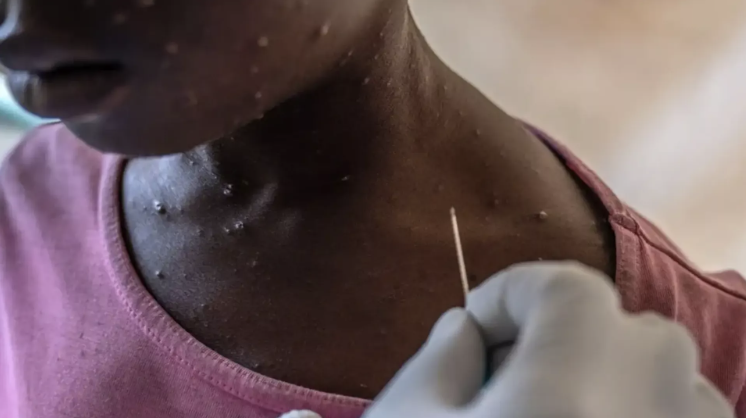 Of the 314 total cases in 2025 in Kenya, most were reported in just the past six weeks, with five deaths during that time.
Of the 314 total cases in 2025 in Kenya, most were reported in just the past six weeks, with five deaths during that time.Mpox cases in Kenya have risen nearly four times since April, pointing to a quiet but steady surge.
The World Health Organization and the Ministry if Health said Kenya had reported 314 mpox cases by July 27, up from 68 in April this year. The sharpest increase occurred in July.
At least five Kenyans died of the disease in June and July, the WHO said in its latest Mpox Multi-country External Situation Report No. 56.
The most affected counties are Mombasa with 146 confirmed cases, followed by Busia (63), Nakuru (21), Kilifi (19), and Nairobi (17). Others include Makueni, Taita Taveta, Uasin Gishu, Bungoma, and Kajiado.
Kenya received 10,700 doses of the MVA-BN vaccine in April this year, when it had reported only 68 cases across 13 counties.
Other most affected African countries are already vaccinating.
"Mpox vaccination activities have started in eight countries with MVA-BN vaccine (the Central African Republic, Democratic Republic of the Congo, Liberia, Nigeria, Rwanda, Sierra Leone, South Africa and Uganda), most of them are implementing a single-dose strategy targeting population groups at high risk of exposure," WHO said.
Kenya's Ministry of Health had announced that vaccination would focus on high-risk groups—close contacts, long-distance truck drivers, and frontline healthcare workers.
Last week, the United Kingdom also notified the WHO of a recent imported case of mpox, involving an adult who had travelled to Kenya.
UK health authorities said they have undertaken contact tracing and provided public health advice to those exposed. “Vaccination has been offered to those eligible, and contacts are being monitored for mpox symptoms,” WHO noted.
Kenya’s outbreak remains relatively modest compared to other high-burden
countries.
Uganda, for instance, has reported 6,296 cases and four deaths in 2025
alone, with 791 of those cases occurring in the past six weeks.
The Democratic Republic of the Congo (DRC) remains the worst-hit country,
with over 14,000 confirmed cases this year and more than 1,000 reported in just
the last six weeks. Sierra Leone follows with 4,967 cases and 21 deaths in
2025, making it the deadliest outbreak on the continent so far.
“Uganda continues to experience community transmission, reporting the
third-highest number of laboratory-confirmed cases in the continent,” WHO says.
Young adults aged 20–29 years remain the most affected, and notably, nearly
half of all deaths in Uganda were among people living with HIV.
In comparison, Kenya’s outbreak remains largely contained but concerning. Of
the 250 total cases in 2025, 118 were reported in just the past six weeks, with three deaths during that time.
WHO confirmed the clade Ib strain is circulating in the country. This is the
same strain responsible for ongoing outbreaks in Uganda and Burundi, and for imported
cases recently detected in China, Australia, and the UK.
Regional patterns show that clade Ib mpox is largely restricted to central
and eastern Africa. While countries like Mozambique are just now reporting
community transmission of this strain for the first time, others like Uganda
have been managing community spread since 2024.
Notably, the Gambia reported its first-ever mpox case this month, although
it was due to clade IIb, a different lineage.
Despite the rise in numbers, the overall trend across the continent appears
to be declining.
“The recent overall downward trend of
confirmed cases across the continent is driven by the decline in cases in
Sierra Leone and the Democratic Republic of the Congo,” the WHO noted.
WHO said it had deployed experts through its Global Outbreak Alert and
Response Network (GOARN) to support the Kenya’s surveillance, laboratory
capacity, and public health interventions.











